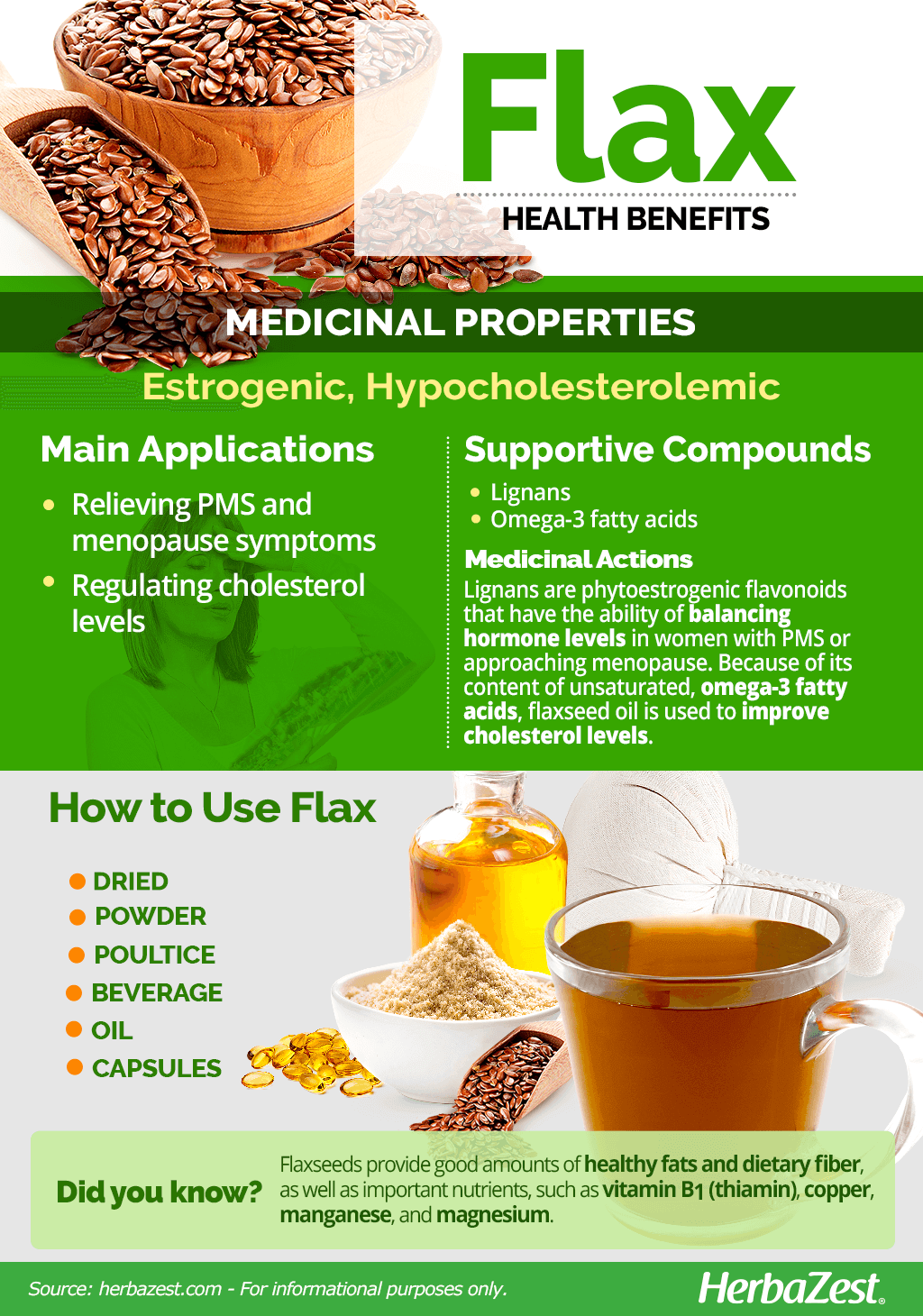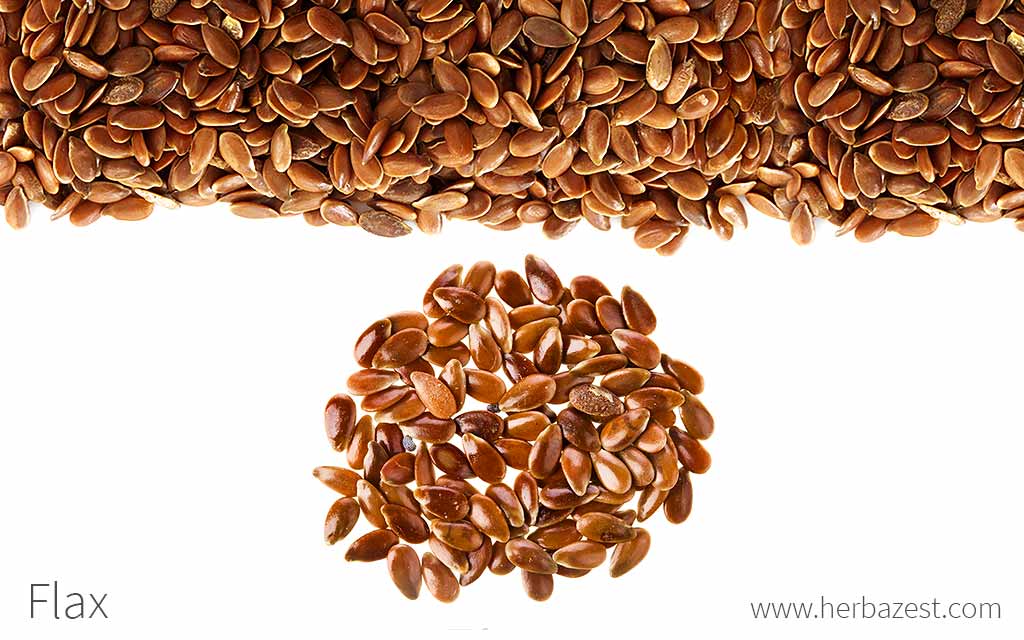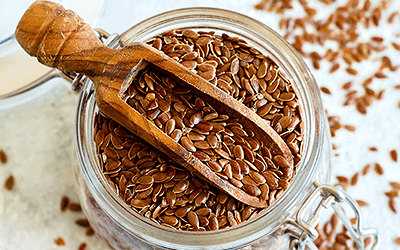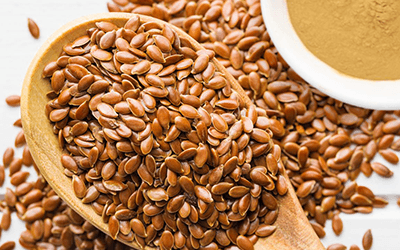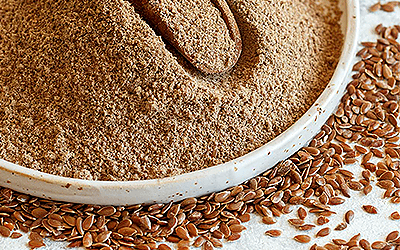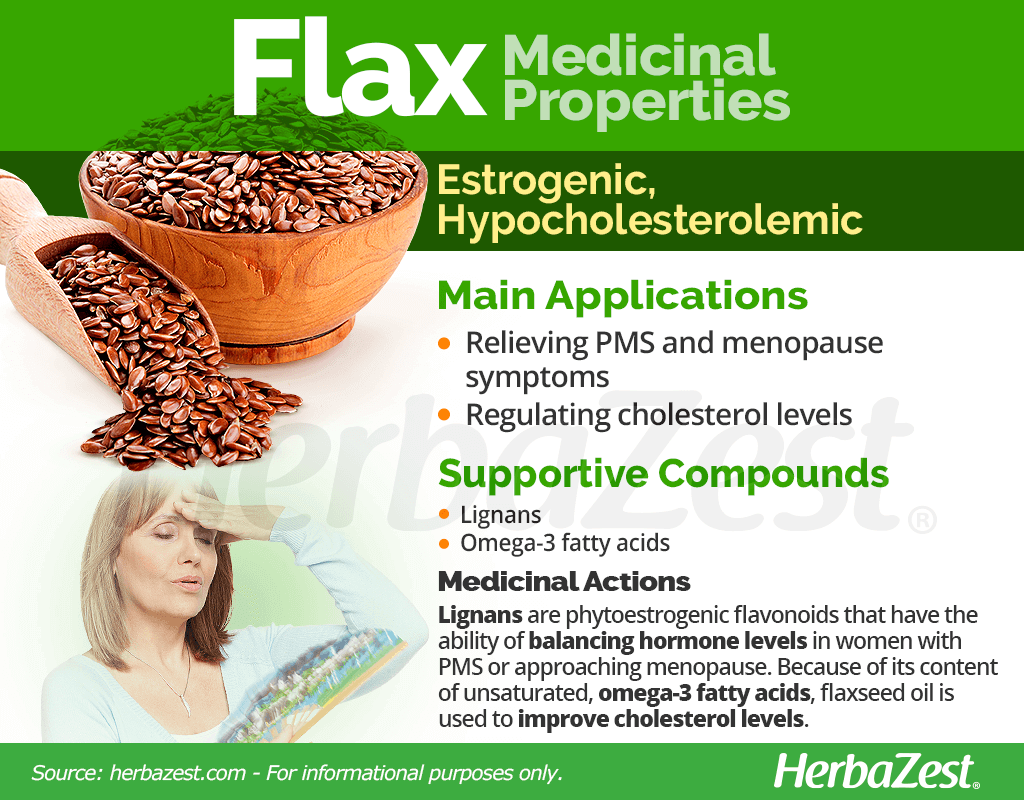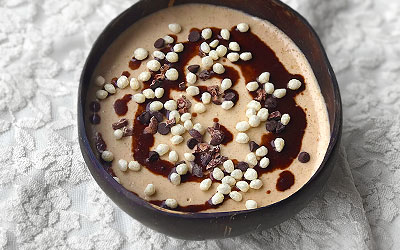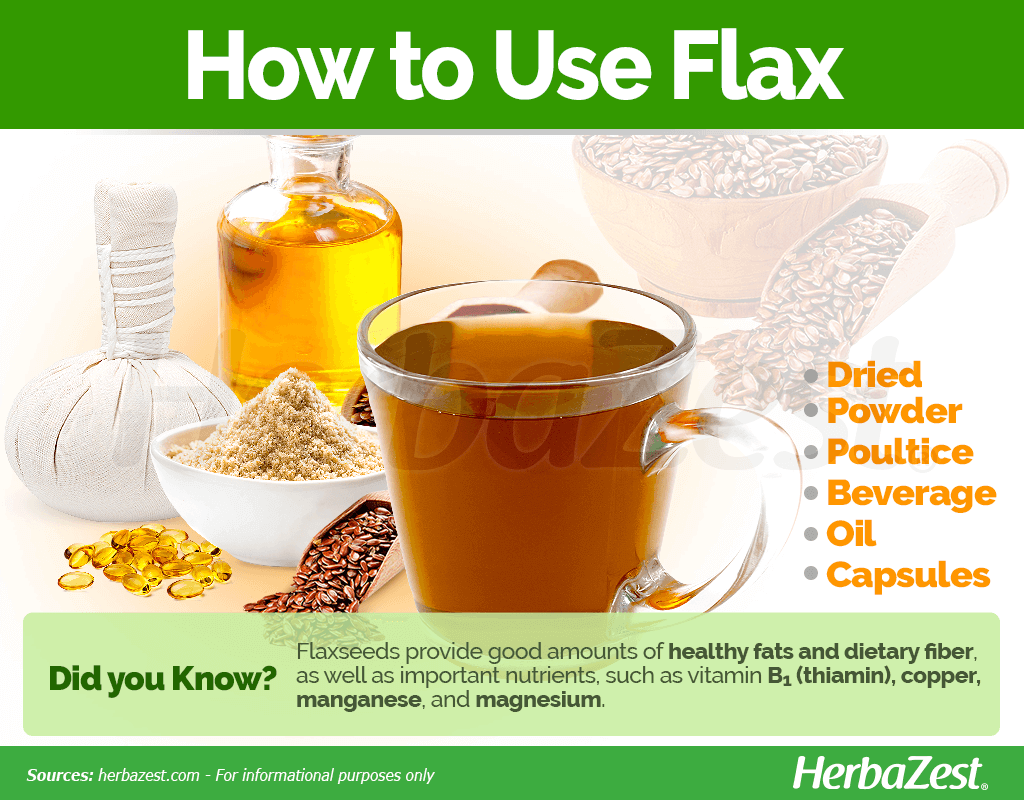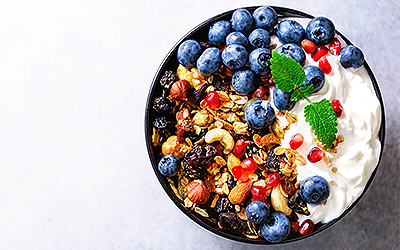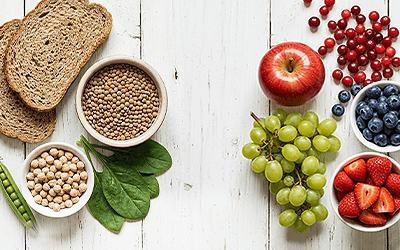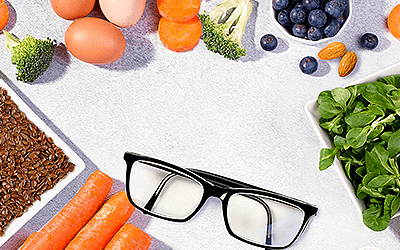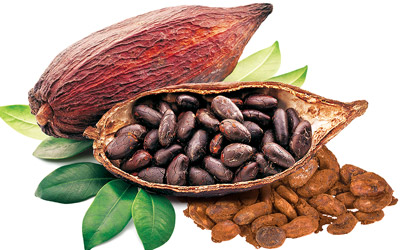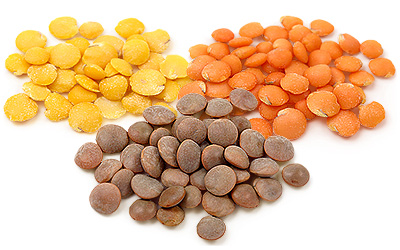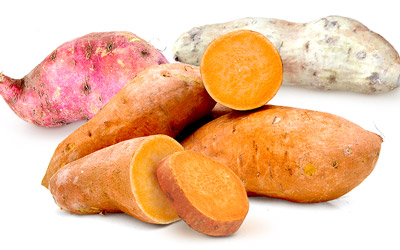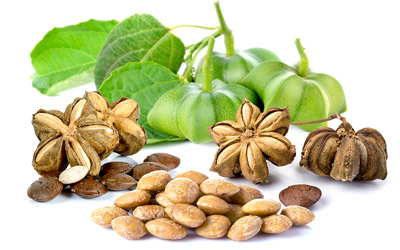Many herbs can claim a long history of human use, but perhaps none more so than flaxseed, an annual plant whose domestication can be traced back to the dawn of civilization. Its species name, usitatissimum, means "most useful" in Latin, and was given due to the grain's various essential uses and importance to human life.
Flax Medicinal Properties
Health Benefits of Flax
For millennia, flax or linseed has served many different purposes, both medicinal and culinary. Even today, flax has shown to improve numerous conditions and positively impact overall health. The main health benefits of flaxseed include:
Relieving symptoms of hormonal imbalances. Flax benefits help ease PMS and menopause symptoms, such as cramps, hot flashes, and night sweats.
Regulating cholesterol levels. Flax seeds are not only an excellent source of good cholesterol, they can help lower bad cholesterol levels in the body.
Traditionally, the health benefits of flaxseed have included:
Stimulating bowel movements. Because of their fiber content, flax seeds can work as a mild laxative.
Reducing inflammation. Flax can alleviate inflammatory pain, particularly in the pelvic muscles.
How It Works
Contemporary researchers agree that the main active ingredient responsible for the health benefits of flaxseed are lignans, which are antioxidant compounds within the flavonoids' family.
The lignans contained in flax are a type of phytoestrogens, which are used to balance hormone levels in women with PMS or approaching menopause. In addition, flax is used as a treatment for constipation because of its soluble and insoluble fibers, which improve stool motility. Flaxseed oil is often consumed to improve cholesterol levels, thanks to its content of unsaturated fatty acids.
THE HIGH AMOUNTS OF OMEGA-3 IN FLAX ARE BELIEVED TO IMPROVE BRAIN FUNCTION.
Sacha inchi and chia are also rich in omega-3, fatty acids, while aguaje, alfalfa, and soy can be used as alternative sources of phytoestrogens as well.
Flax Side Effects
Flax or linseed is likely safe for most individuals who consume it orally. Because it works to increase bowel movements, however, there are some mild, unpleasant side effects that can be associated with taking flaxseed, which include bloating, gas, upset stomach, constipation, diarrhea, and nausea. It can also block the intestines if taken in excess, so it is important to take it with water to prevent this from occurring.
Cautions
It is important to note that unripe flax seeds can be potentially poisonous, so it is important to make sure they are ripe before consumption.
In spite of their numerous benefits, flax seeds contain linamarin, a potentially toxic cyanogenic glucoside that can be found in trace amounts in flax, as well as in cassava root and lima beans.
Individuals with gastrointestinal obstructions should not take flaxseed or flax meal, since both forms of flax can worsen this condition.
Individuals with circulatory problems, such as hypertension or hypotension, as well as those who suffer from diabetes should consult a physician before taking flax, since it can significantly lower blood pressure and blood sugar levels.
Women who are pregnant or breastfeeding should consult a physician before taking flax due to estrogenic compounds, which can cause hormones to fluctuate.
- Medicinal action Estrogenic, Hypocholesterolemic
- Key constituents Lignans, omega-3 fatty acids
- Ways to use Capsules, Cold infusions, Hot infusions/tisanes, Food, Poultice, Essential oil, Dried
- Medicinal rating (4) Very useful plant
- Safety ranking Safe
Flax Nutrition
The nutritional benefits of flax have certainly added to the grain's reputation as indispensable: its seeds contain high concentrations of unsaturated fatty acids, most notably omega-3 essential oils. They also feature high levels of both soluble and insoluble dietary fiber, other micronutrients such as antioxidants that promote overall wellness as well as manage specific medical conditions.
The seeds of flax also provide vitamin B1 (thiamin), also known as the "anti-stress vitamin" due to its ability of boosting immunity; copper, which supports the production of new red blood cells and contributes to the well-functioning of blood vessels, nerves, bones, and the immune system; manganese, which aids in the formation of connective tissue, bones, blood clotting, and sex hormones; and magnesium, required for energy production, as well as for the regulation of protein synthesis, muscle and nerve function, blood glucose levels, and blood pressure.
Additionally, flax contains fair amounts of phosphorus and selenium, along with the presence of many other nutrients in small quantities.
A tablespoon of whole flax (about 10 g) provides 55 calories, as well as 4%, 7%, and 11% of the daily value for protein, fats, and dietary fiber, respectively.
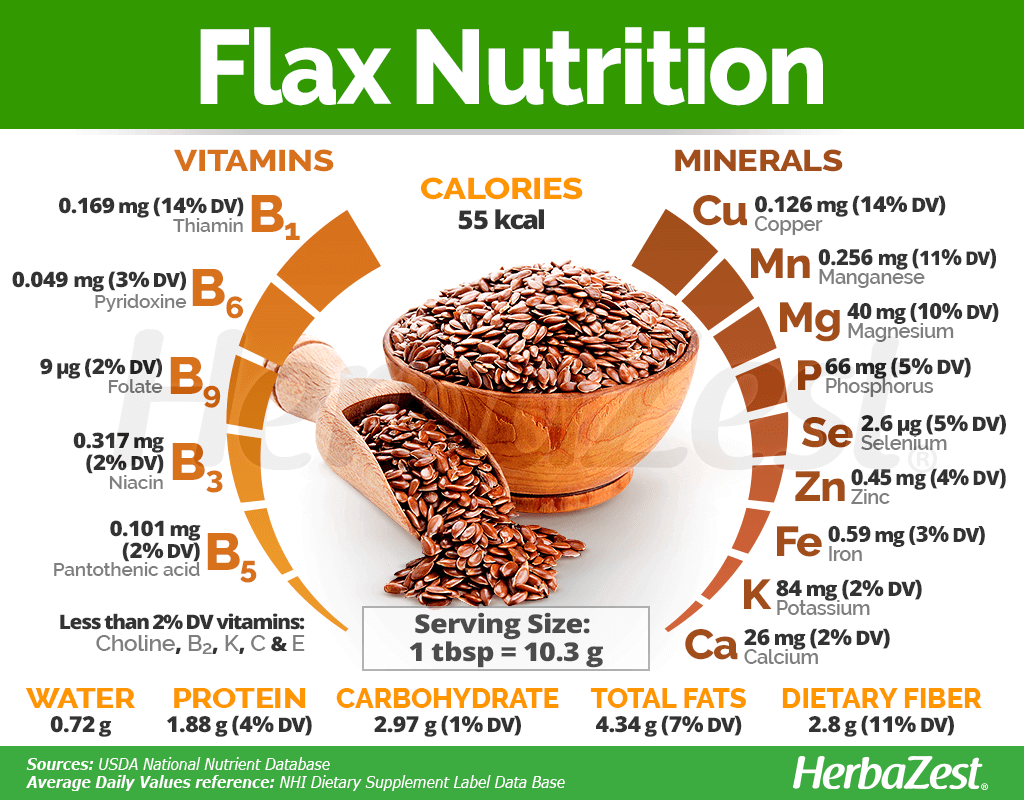
How to Consume Flax
The most effective way of obtaining the health benefits of flaxseed is in medicinal forms of consumption, where the properties are more concentrated.
Natural Forms
Dried. The dried seeds of flax can be soaked overnight until they reach five times their volume of water. The next day they will be ready to take by the spoon or to be added to smoothies, juices, or morning cereal. In this way, flax is able to retain fluids within the gut, helping to make the stools softer and encouraging easier bowel movements.
Powder. Also called flax meal or flaxseed flour, this form can be consumed by the spoon with a lot of water or be added to virtually any culinary preparation, from baking goods (as an egg replacement), to sauces (as a thickener), smoothies, and cereal. It helps with constipation and also contributes to balance cholesterol levels.
Poultice. The crushed seeds of flax or flaxseed flour can be hydrated in water and be applied topically, as a paste, over superficial wounds, boils, sunburns, and other skin irritations.
Beverage. The whole seeds of flax can be boiled in abundant water until a mucilaginous liquid is obtained; this liquid can be taken orally, alone or mixed with juices or smoothies, in order to soothe internal ulcers, gastritis, and constipation.
Herbal Remedies & Supplements
Oil. Flaxseed oil has numerous medicinal properties, including the relief of menopause symptoms due to its estrogenic compounds.
Capsules. In this medicinal form, flax capsules are often used to stimulate bowel movements and reduce menstrual cramps.
- Edible parts Seed
- Edible uses Oil
Growing
One of the oldest domesticated crops, it is thought that flax has been cultivated since the Stone Age. It originates in the Mediterranean areas, so it prefers a temperate climate, with temperatures ranging from 65 - 75°F (18 - 24°C). For additional tips on how to help flax thrive, follow the growing guidelines below.
Growing Guidelines
Flax plants need full sun exposure in order to thrive.
Loamy soil, rich in organic material - particularly nitrogen - is recommended.
The soil must be kept moist, but not wet.
Flax seeds should be 10 - 12 inches (25 - 30 cm) apart and be sown by scattering early in the spring.
Seed germination should occur within three to four weeks, but flowers won't appear until the following year.
Flax plants should not be grown in the same field every year, but instead should be rotated with other crops to reduce disease potential and improve yield.
- Life cycle Annual
- Harvested parts Seeds
- Light requirements Full sun
- Soil Medium (loam), Loamy sand, Silt loam, Clay loam, Well-drained
- Soil pH 6.1 – 6.5 (Slightly acidic), 6.6 – 7.3 (Neutral), 7.4 – 7.8 (Slightly alkaline), 7.9 – 8.4 (Moderately alkaline)
- Growing habitat Temperate climates
- USDA Plant Hardiness Zones 5a, 5b, 6a, 6b, 7a, 7b, 8a, 8b, 9a, 9b
- Planting time Early spring
- Plant spacing average 0.25 m (0.82 ft)
- Growing time A year
- Potential insect pests Aphids, Thrips
Additional Information
Plant Biology
While there are several different species in the Linum genus, Linum usitatissimum—or common flax—has distinctive properties that separate it from other species. For example, unlike other species of Linum, common flax is an annual plant, rather than a perennial like its relatives. Cultivated flax plants grow to 4 feet (1.2 m) tall and have slender stems. Its leaves are glaucous green and slender lanceolate, growing up to 20-40 mm long and 3 mm broad. The flowers are pale blue and contain five petals.
Classification
Scientifically known as Linum usitatissimum, flax is a member of the Lineaceae family, sharing its main characteristics with approximately 250 other species found throughout the world.
The genus Linum includes roughly 190 species of flax, each slightly different: Common flax in particular can grow up to four feet (1.2 m) tall and produces pale blue flowers and thin, green leaves. Glossy seeds are contained in the capsules of its round, dry fruit.
Related Species and Cultivars
The diversity of species in the genus Linum depends on the area they grow in. A rich variety can be found in the Mediterranean basin (including parts of Asia), whereas fewer species occur in northern Europe. L. catharticum and L. austriacum are the only Linum species that grow naturally in Scandinavia, while North America and México register the greatest number of species, over 63.
The genetic hybridization between common flax and wild Linum species has produced many cultivars. The most notable results have come from the breeding of L. gradiflorum and L. usitatissimum.
When it comes to flax seeds, there are two main types available for consumption, differing very little in nutritional value but coming to have separate uses nonetheless: Yellow or golden flax seed is most commonly eaten by humans and utilized in culinary products, while brown flax seed is also safe for human consumption, but it is used chiefly as an ingredient in paint, fiber, and livestock feed. Solin, a variety of yellow flax, is the exception to the rule, as some research has shown its oil to have less nutritional benefit than others.
Historical Information
Flax seed is thought to originate between the eastern Mediterranean and India, dating back to 30,000 BCE as one of the first crops grown in the Fertile Crescent. Following Mesopotamia, ancient Ethiopian and Egyptian cultures also produced the plant for its nutritional value and textile use, and it then spread as far as China in the East and the British Isles in the West. Puritan settlers first introduced the plant to North America in the 15th century, where it continues to be a major part of the crop cultivation industry.
Flax is a symbol for Northern Ireland and the national flower of Belarus.
Economic Data
The highest demand for flax seed comes from the textile industry rather than the alimentary one. Modern times have only increased the demand for flax seed, and countries across the globe have risen to the occasion, producing 1.6 million tons in 2011 alone.
Canada leads the flax seed industry, contributing to 23% of the global production, closely followed by China and Russia. The rapid growth of the flax plant makes cultivation easy and efficient under the right conditions - an invaluable quality, given the several business sectors that depend upon it.
Popular Beliefs
Because common flax is one of the oldest cultivated crops, it is featured in many historic and fictional references, including Homer's Odyssey and the Christian Bible. Pliny, a Roman naturalist, wrote about the laxative and therapeutic powers of flax in the first century CE, and the plant ha been widely considered a subject of folklore and medicinal remedies since ancient times.
Other Uses of Flax
Industrial Purposes. To this day, common flax is still used for numerous industrial purposes due to its oil rich seeds. Linseed oil, which is found in flax seeds, is used as a drying agent for paints, varnishes, lacquer, and printing ink. It is also occasionally used to produce some paper products.
Fodder. Because it contains up to 35% crude protein, common flax is made into linseed oil meal, which is often used for feeding livestock. The straw that is found in flax, however, is considered poor quality and is not often used for livestock feed.
Personal care. Extracts and oil of flax seed are often used for various cosmetic products, mainly as skin conditioning agents.
- Other uses Animal feed, Paper, Cosmetics
Sources
- Critical Reviews in Food Science and Nutrition, Flaxseed: a potential source of food, feed and fiber, 2011
- Flax: The genus Linum, pp. 35-37
- Journal of the Society for Integrative Oncology, Pilot evaluation of flaxseed for the management of hot flashes, 2007
- Purdue University, Linum usitatissimum L. | Flax
- The British Journal of Nutrition, Nutritional Effects of High Alpha Linolenic Oilseed, 1993
- Encyclopedia of Herbal Medicine, p. 111
- MedlinePlus Herbs and Supplements, Flaxseed
- American Cancer Society, Herbs, Vitamins, and Minerals: Flaxseed
- The Herb Book, pp. 193-4
